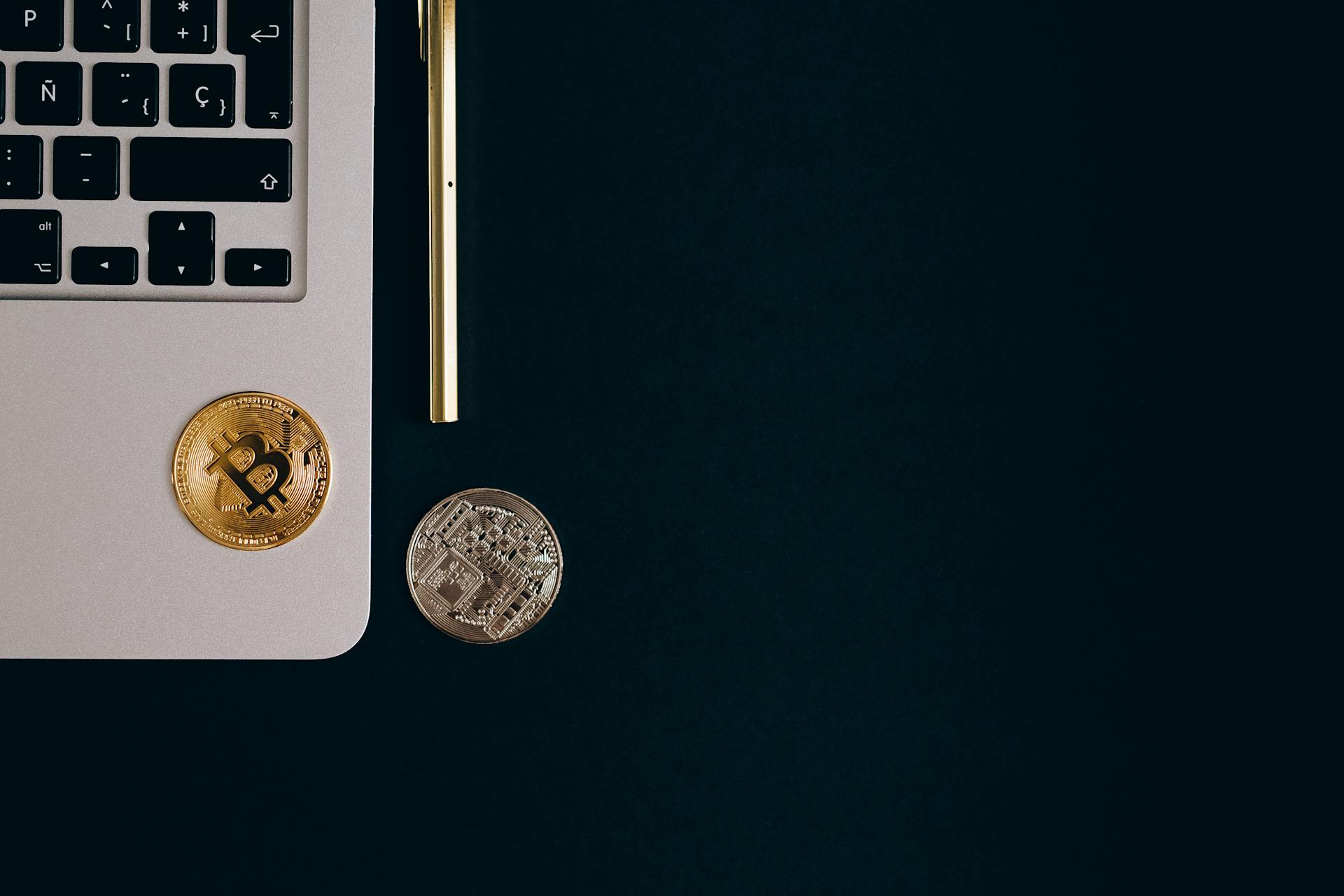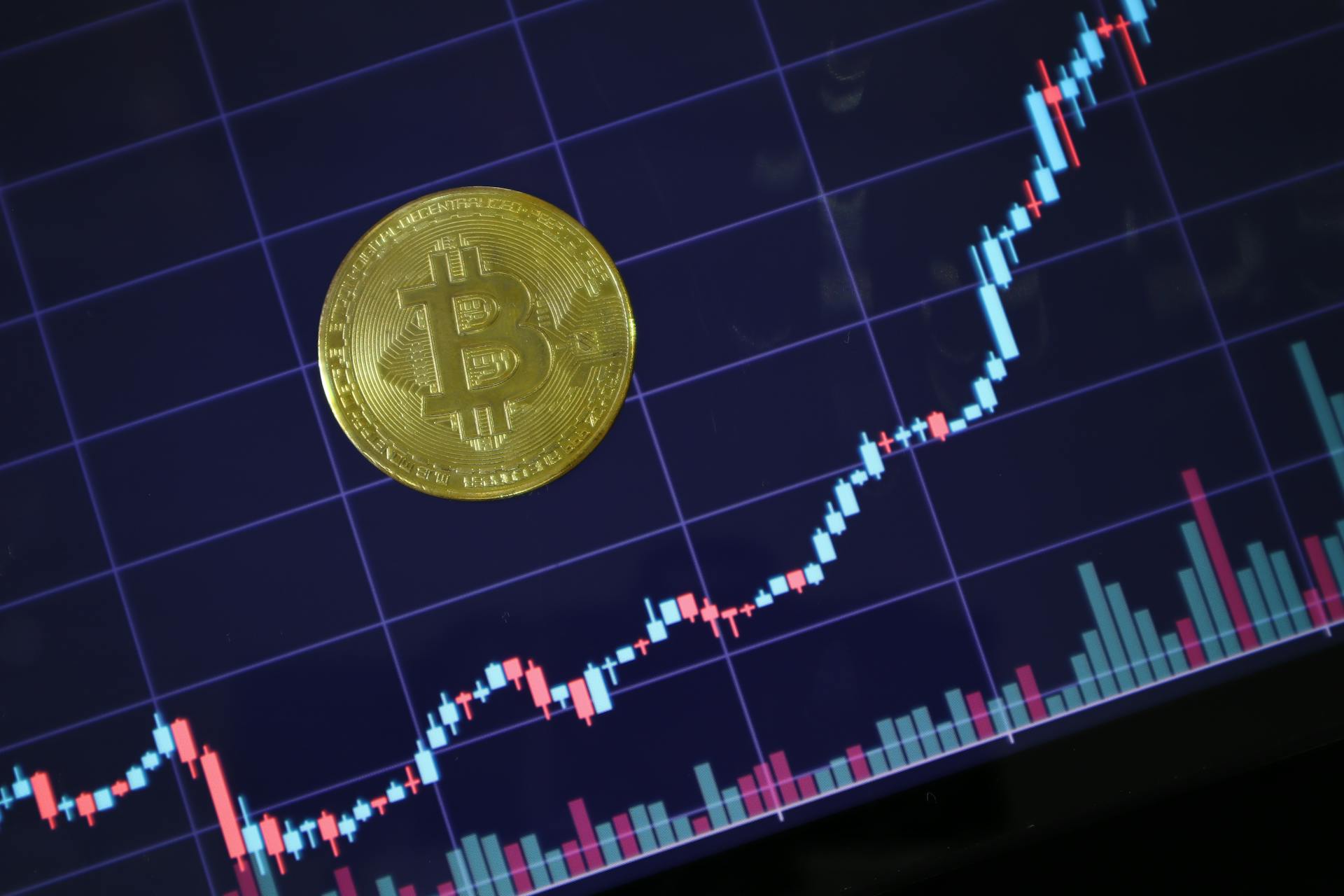
Ripple is a cryptocurrency that's been making waves in the financial industry. It's designed to be fast, secure, and low-cost, making it an attractive option for banks and other financial institutions.
Ripple was founded in 2012 by Chris Larsen and Jed McCaleb. They wanted to create a system that would enable fast and cheap international money transfers.
Ripple's technology, known as the Ripple Protocol, allows for real-time cross-border payments. This means that money can be transferred from one country to another in a matter of seconds.
Ripple's cryptocurrency, XRP, is used to facilitate these transactions. It's a unique digital asset that's designed to be fast and efficient.
If this caught your attention, see: Rocket Money Mint
What Is Ripple?
Ripple is one of the largest cryptocurrency platforms by market capitalization.
It's been around since 2012, making it one of the earliest pioneers in the blockchain space, behind only Bitcoin and before the Ethereum network.
Ripple's network was designed to be faster and more scalable than Bitcoin.
The XRP digital token is meant to facilitate financial transactions as a bridge currency.
Ripple's blockchain ledger is centralized, and there is no mining of XRP.
Key Features
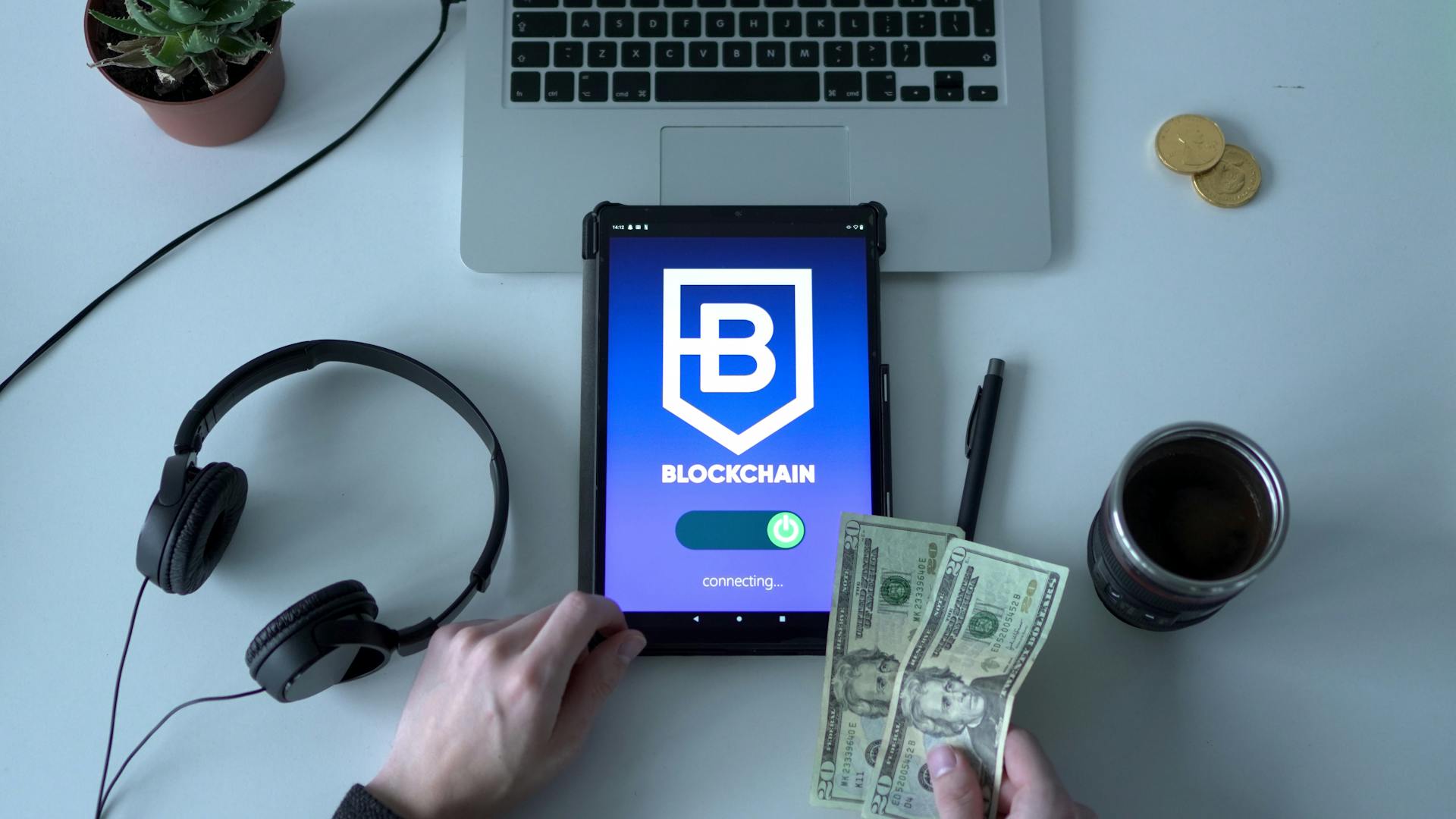
Ripple's architecture brings three main advantages to global transactions: speed, cost-effectiveness, and scalability.
One of the key benefits of Ripple is its speed, with transactions taking only 3-5 seconds to process, compared to 10 minutes for Bitcoin. This makes it an attractive option for financial institutions handling large volumes of cross-border payments.
Ripple is a top 10 cryptocurrency by market capitalization, and its cryptocurrency token, XRP, is widely used for financial transactions. This is especially true for foreign exchange transactions, where XRP is used as a bridge currency.
Here are some key features of Ripple that make it a compelling alternative to traditional banking systems:
- Speed: transactions take 3-5 seconds to process
- Cost-effectiveness: a more affordable option for cross-border payments
- Scalability: capable of handling large volumes of transactions
How It Works
The Ripple network processes transactions in 3-5 seconds, making it significantly faster than traditional blockchain networks. This is thanks to the Ripple Protocol Consensus Algorithm, which validates transactions by having designated servers compare transaction records until they reach a supermajority agreement.
Ripple can handle up to 1,500 transactions per second, which is impressive considering the speed and efficiency of the network. This is a big deal for banks and financial institutions that need to process a high volume of transactions quickly.
Banks can use Ripple for cross-border payments, either by using XRP as a bridge currency or leveraging Ripple's messaging system to optimize their existing currency transfers. This flexibility allows banks to reduce their transaction costs while maintaining control over their operations.
How It Works
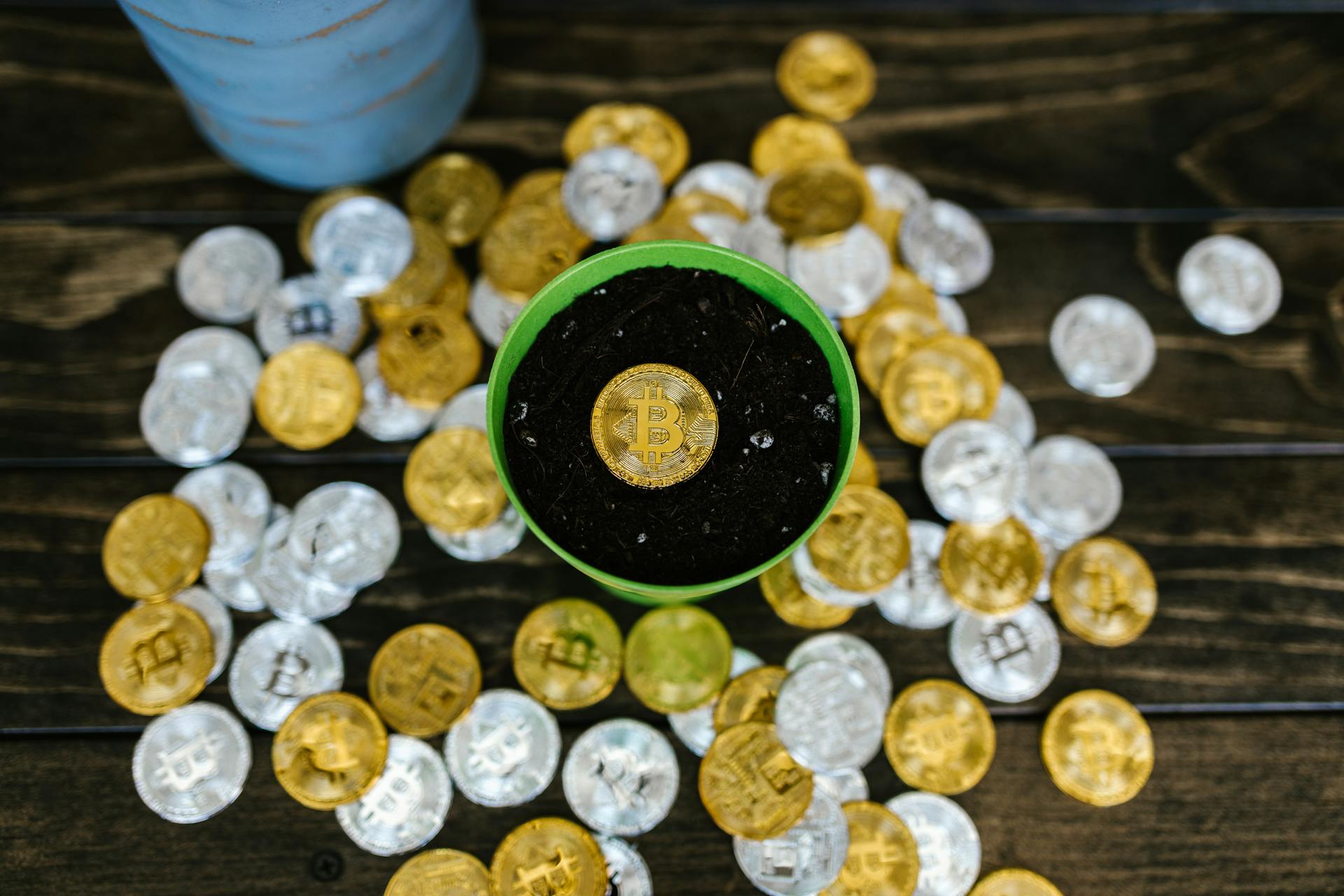
The Ripple network uses the Ripple Protocol Consensus Algorithm to validate transactions, which allows it to process transactions in 3-5 seconds.
This approach enables the network to handle up to 1,500 transactions per second, making it significantly faster than traditional blockchain networks.
Banks using Ripple for cross-border payments can either use XRP as a bridge currency or leverage Ripple's messaging system to optimize their existing currency transfers.
The network can automatically find the cheapest path for transactions, whether through direct currency exchange or using XRP as an intermediate step.
For another approach, see: Ripple Xrp Stablecoin
How Does It Make Money?
Ripple makes money by selling XRP, which is a profitable venture for the company. The company sells XRP from its escrow accounts and realizes a profit that is paid to the Ripple Foundation.
Ripple also earns money through transaction fees, which are paid to the company for facilitating transactions. The fee is a mere 10 drops, but since there's no incentive paid out to validators, the entire fee goes to Ripple.
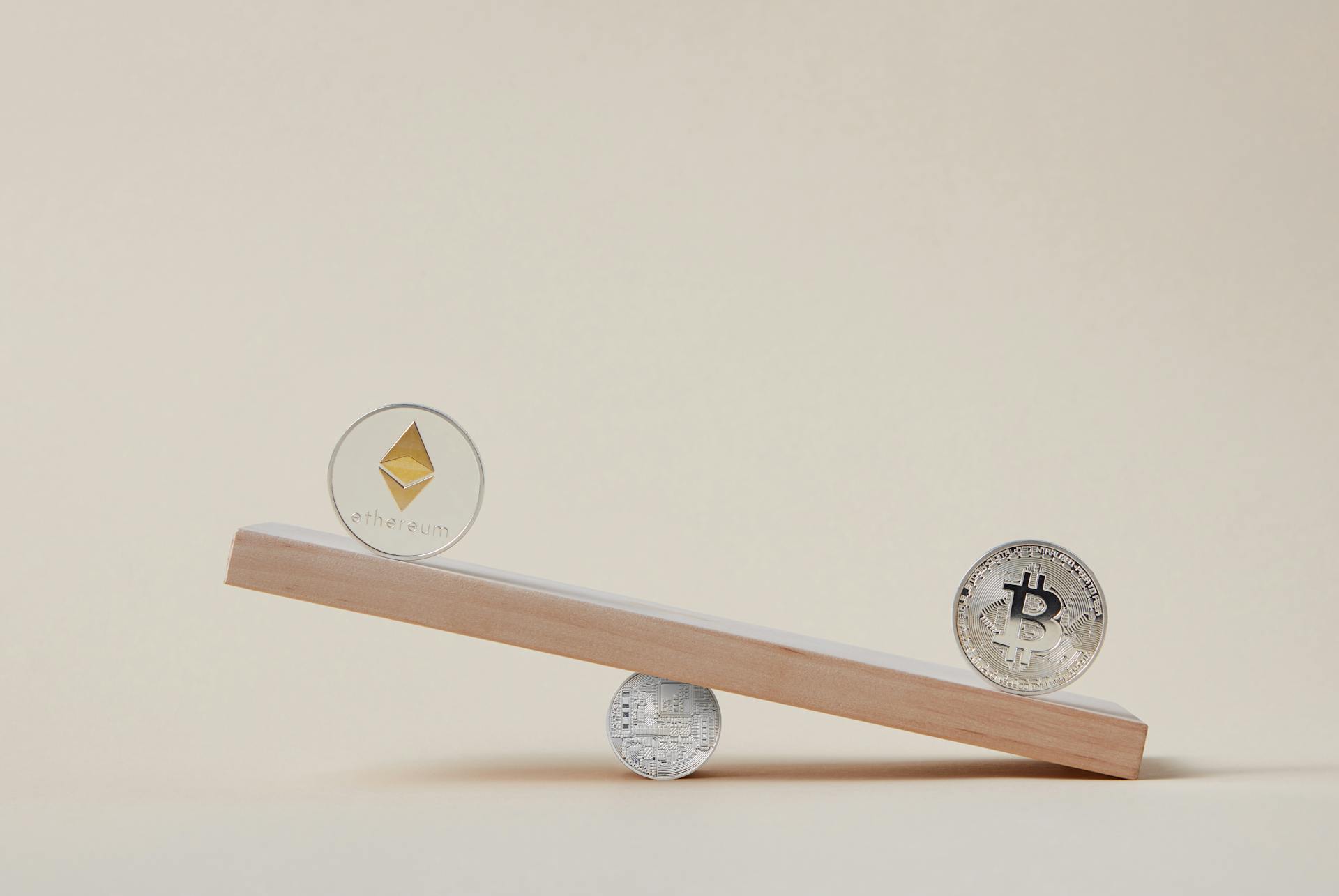
Ripple has a loan product called ODL that can be collateralized with XRP, generating interest fees for the company. This loan product was introduced in 2020 and allows users to access On-Demand Liquidity.
Ripple has been expanding its reach by acquiring other companies, such as Tranglo, an Asian global payments company. This strategic move is likely to increase Ripple's revenue and market share.
History and Overview
Ripple's development began in 2011 by engineers David Schwartz, Jed McCaleb, and Arthur Britto.
The open-source project was originally called "Ripple", with a unique consensus ledger called the Ripple Consensus Ledger and a transaction protocol called the Ripple Transaction Protocol or RTXP.
The technology of the "XRP Ledger Consensus Protocol" was formally established in 2012.
The XRP Ledger was initially developed as a way to securely move money around the world, with the first version of Ripple founded in 2004 as RipplePay in Vancouver, Canada by Ryan Fugger.
You might enjoy: Bitcoin Protocol News
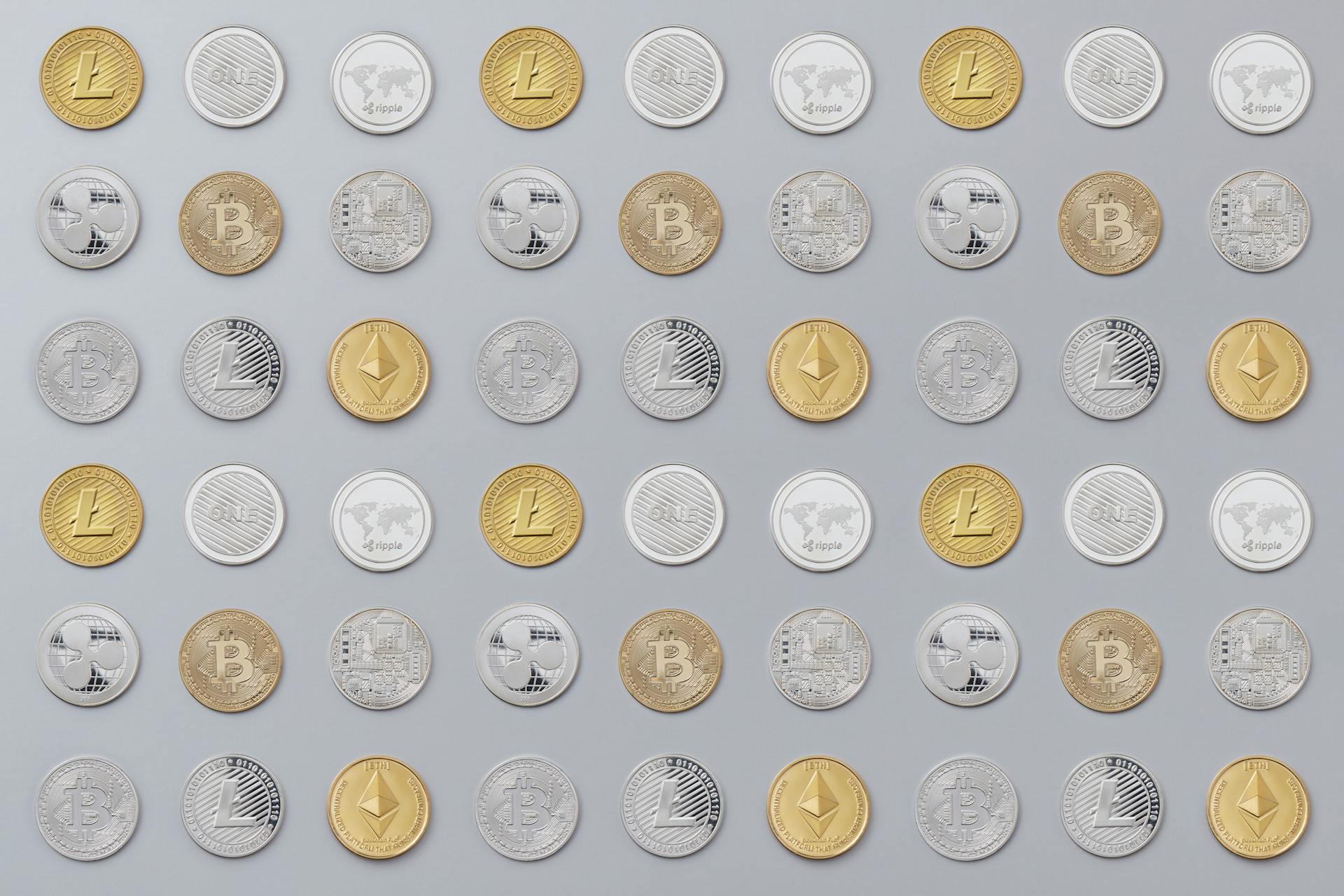
Ripple was later sold to Jed McCaleb, Arthur Britto, and David Schwartz in 2012, who transformed the company into a digital currency network and renamed it OpenCoin.
Jed McCaleb left the company in 2013 and forked Ripple into Stellar, and the company was renamed Ripple Labs.
The company was finally shortened to just "Ripple" in 2015.
In May 2018, Ashton Kutcher gifted a charity sponsored by Ellen DeGeneres $4 million in XRP, which was noted at the time to be the "third most-valuable cryptocurrency on the market".
A significant court decision was made in 2023, where Judge Analisa Torres of the United States District Court for the Southern District of New York stated that the XRP token itself is not a security, although the manner in which it is sold could constitute the sale of a security.
For your interest: Cryptocurrency Security Risks
Technical Overview
The XRP Ledger operates on a consensus protocol that differs from traditional proof-of-work (PoW) and proof-of-stake (PoS) mechanisms. Transactions are validated by a network of independent validators who reach consensus every 3 to 5 seconds, enabling rapid transaction settlement.
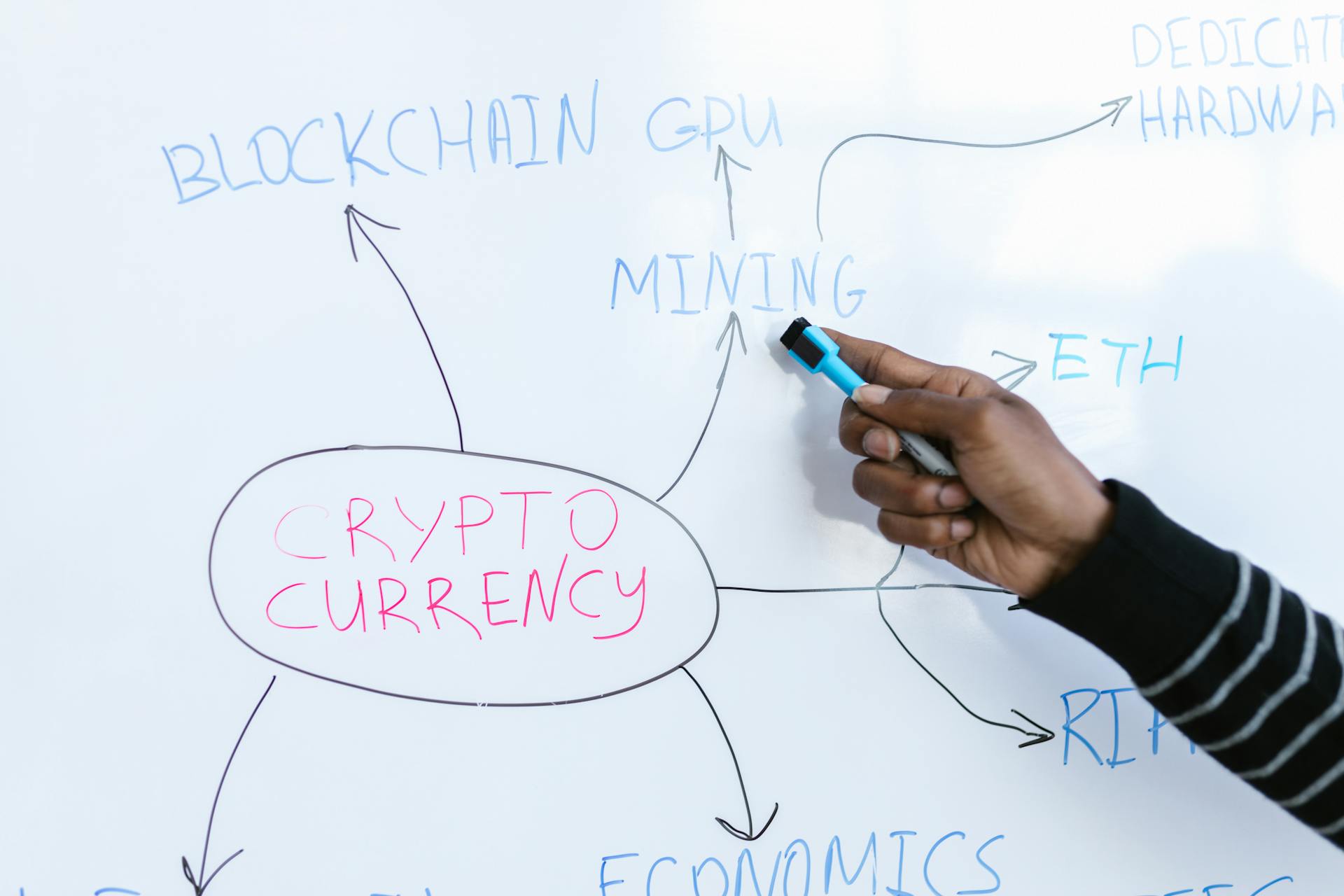
Users rely on a trusted list of validators known as the Unique Node List (UNL). This approach provides faster transaction validation and security, though it has led to discussions about centralization within the network.
The XRP Ledger peer-to-peer overlay network is characterized by a small-world network topology, featuring a tightly clustered structure and short paths between nodes. This platform uses much less electricity than Bitcoin—about as much electricity as it costs to run an email server.
See what others are reading: Fake Crypto Exchange
Technical Overview
The XRP Ledger operates on a consensus protocol that differs from traditional proof-of-work (PoW) and proof-of-stake (PoS) mechanisms. This unique approach enables rapid transaction settlement, with transactions validated by a network of independent validators every 3 to 5 seconds.
Users rely on a trusted list of validators known as the Unique Node List (UNL). This trusted list is essential for the network's functionality.
The XRP Ledger peer-to-peer overlay network features a small-world network topology, characterized by a tightly clustered structure and short paths between nodes. This structure allows for efficient information exchange and rapid transaction validation.
The platform uses significantly less electricity than Bitcoin, with estimates suggesting it consumes as much electricity as running an email server. This makes it a more environmentally friendly option for cryptocurrency transactions.
Consensus Mechanisms and Costs

The XRP Ledger's consensus mechanism is a social governance system that relies on a network of validators to verify transactions. This approach consumes negligible amounts of energy, unlike traditional proof-of-work (PoW) mechanisms.
Each validator proposes a block of transactions, and they compare blocks every 3 to 6 seconds to reach consensus. If an 80% majority of validator nodes agree, a consensus is achieved, and the block is added to the ledger.
The XRP Ledger's peer-to-peer overlay network is characterized by a small-world network topology, featuring a tightly clustered structure and short paths between nodes. This allows for rapid transaction settlement and security.
Ripple's quorum-based consensus method, RPCA, allows a majority of validators to agree on a set of transactions, which are then validated and written to the blockchain. This approach enables near-instantaneous confirmations and cheaper built-in transaction fees.
XRP transactions are typically processed and confirmed within 3 to 5 seconds, while Bitcoin transactions can take anywhere from 10 minutes to several hours to confirm. This is because XRP's consensus mechanism is designed for speed and scalability.
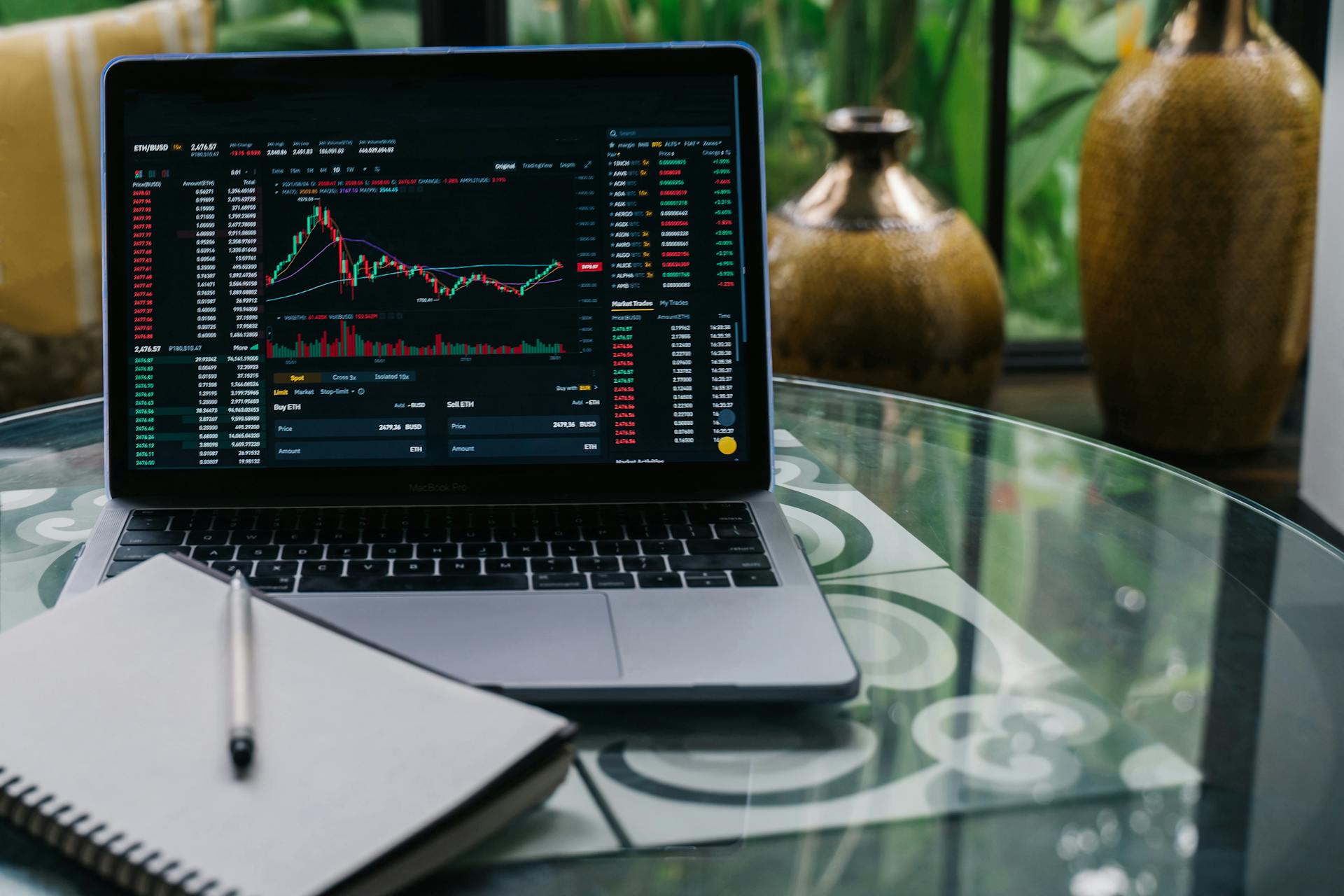
Network transaction fees for XRP are negligible, and users are required to pay a small amount of XRP, which is burned by the network. The standard amount burned is 0.00001 XRP, which is equivalent to 10 'drops', the smallest unit of XRP.
In contrast, Bitcoin's median fee for a transaction has been as high as $128 and was around $1.20 in November 2024. This highlights the significant cost savings of using the XRP Ledger.
Pros and Cons
Ripple cryptocurrency has been gaining traction in the market, and it's essential to weigh its pros and cons before making any investment decisions.
One of the significant advantages of Ripple is its real-world utility and adoption. Real financial institutions use RippleNet for cross-border payments, making it a reliable option for international transactions.
Ripple's energy consumption is another notable benefit. XRP transactions use minimal energy compared to Bitcoin and Ethereum, with the network consuming as much energy annually as 50 U.S. households.
If this caught your attention, see: Do All Cryptocurrencies Use Blockchain
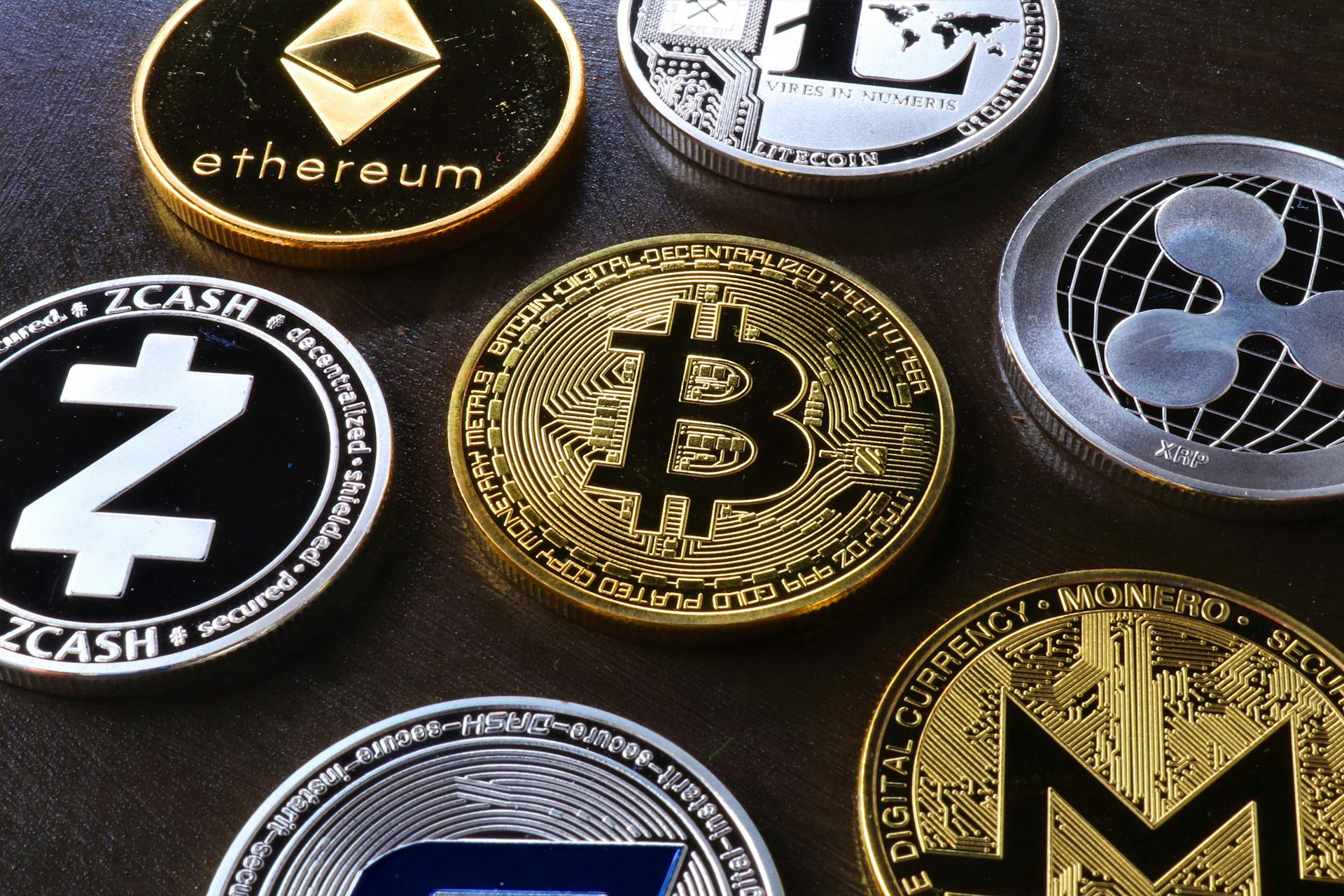
RippleNet also reduces banks' operational costs by eliminating intermediary fees and pre-funding requirements in foreign accounts. Banks can save up to 60% on international transfer costs.
However, regulatory uncertainty is a significant concern for Ripple. The ongoing SEC lawsuit creates uncertainty around XRP's status as a security, limiting its trading options in the U.S. and affecting its price stability.
Ripple Labs' central control over a large portion of XRP tokens is another drawback. They control about 48 billion XRP in escrow, which contradicts the decentralization principles of cryptocurrencies.
Most banks on RippleNet use Ripple's technology without XRP tokens, limiting its utility and potential demand from institutional adoption.
Usage and Adoption
Ripple is a payment network for financial institutions, where XRP serves as a bridge currency for cross-border transactions. This allows for near-instant settlements and trade on cryptocurrency exchanges.
The XRP Ledger supports custom tokens and smart contracts, enabling developers to build decentralized applications. This is achieved through its open-source protocol, which companies and developers can use to build payment solutions.
Financial institutions, including hundreds of banks like Bank of America and Santander, use RippleNet for fast, cheap, and reliable global payments. This eliminates the need for pre-funding accounts with cash, unlike traditional wire transfers.
If this caught your attention, see: As Payment Theblockchainbrief Fractions Bitcoins
Usage

RippleNet serves as a payment network for financial institutions.
The XRP Ledger supports custom tokens and smart contracts for building decentralized applications.
Users can send XRP directly to other wallet addresses for near-instant settlements.
Companies and developers can build payment solutions on the XRP Ledger using its open-source protocol.
The XRP Ledger enables features like payment streaming and escrow mechanisms.
Businesses can create automated payment systems using the tools available on the XRP Ledger.
These tools also allow businesses to set up recurring transfers or develop new financial products.
Worth a look: Cryptocurrencies Payment Solution
Customer Base
RippleNet's customer base is comprised of hundreds of banks, ranging from small institutions to large multinational organizations like Bank of America and Santander.
The financial institutions that use RippleNet include banks and money transfer companies, which is a notable difference from traditional wire transfer methods.
Ripple touts its RippleNet as a fast, cheap, and reliable global payments network, which doesn't require users to "pre-fund" accounts with cash like they would with a traditional wire transfer.
Risks and Challenges
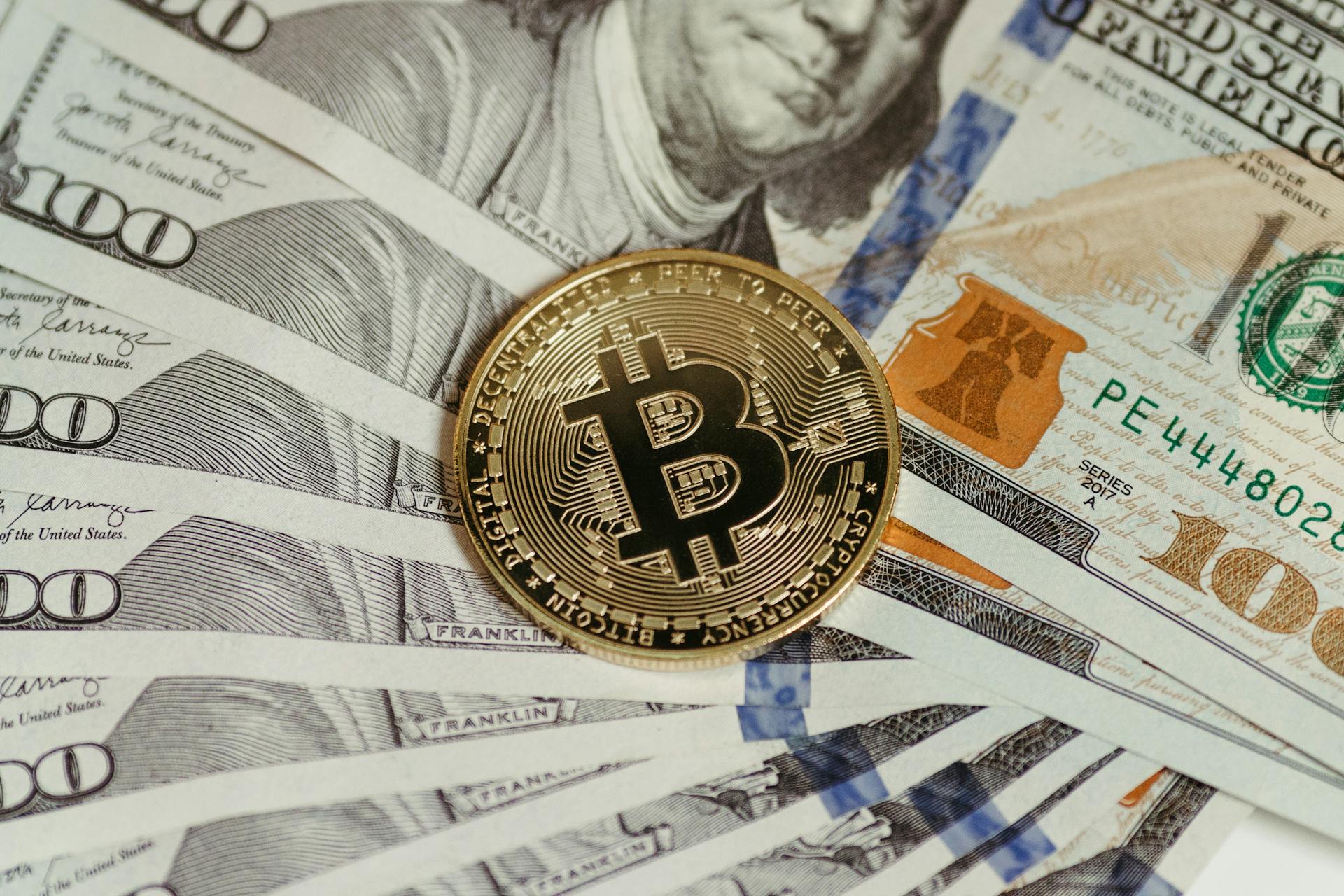
The SEC lawsuit against Ripple Labs has created uncertainty around XRP's regulatory status, limiting its availability in the U.S. market.
Ripple's market position is also being challenged by competition from other blockchain payment solutions and central bank digital currencies.
SWIFT's new payment system improvements and emerging blockchain networks offer alternative solutions for cross-border transfers, making Ripple's market position even more precarious.
The concentrated ownership of XRP tokens by Ripple Labs raises concerns about centralization and price stability, making it a riskier investment.
Monthly releases from the escrow system can affect market supply, impacting XRP's price and stability.
Investing in cryptocurrency comes with high price volatility and regulatory uncertainties, which can result in complete loss of capital.
You might like: Ripple Cryptocurrency Cost
Frequently Asked Questions
Could Ripple reach $500?
Reaching $500 appears highly improbable due to the enormous market capitalization required, surpassing the combined value of the world's largest companies. To put this into perspective, XRP's market cap would need to exceed $26 trillion.
What will XRP be worth in 2025?
XRP's price is forecasted to range between $1.8 and $8.4 in 2025, with some predictions suggesting it may peak above $10. The exact value remains uncertain, but experts offer varying estimates for the cryptocurrency's future worth.
Is XRP crypto a good investment?
XRP crypto is a highly speculative investment with potential for significant gains, but also comes with high volatility. Longtime investors may want to hold on, while new investors may have missed the rally.
Is XRP a real cryptocurrency?
Yes, XRP is a legitimate cryptocurrency, but it's unique in that it's owned by a single company, unlike most other cryptocurrencies. Learn more about XRP's distinct characteristics and how it operates.
Why did Ripple get banned?
Ripple was accused by the SEC of selling XRP in an unregistered security offering, leading to a court case with potential far-reaching consequences for the cryptocurrency industry.
Sources
- https://www.investopedia.com/tech/whats-difference-between-bitcoin-and-ripple/
- https://thecryptobasic.com/2024/12/31/wallstreetbets-founder-predicts-xrp-price-if-global-crypto-market-cap-hits-5t/
- https://en.wikipedia.org/wiki/XRP_Ledger
- https://www.forbes.com/sites/digital-assets/article/what-is-ripple-xrp/
- https://corporatefinanceinstitute.com/resources/cryptocurrency/ripple/
Featured Images: pexels.com
